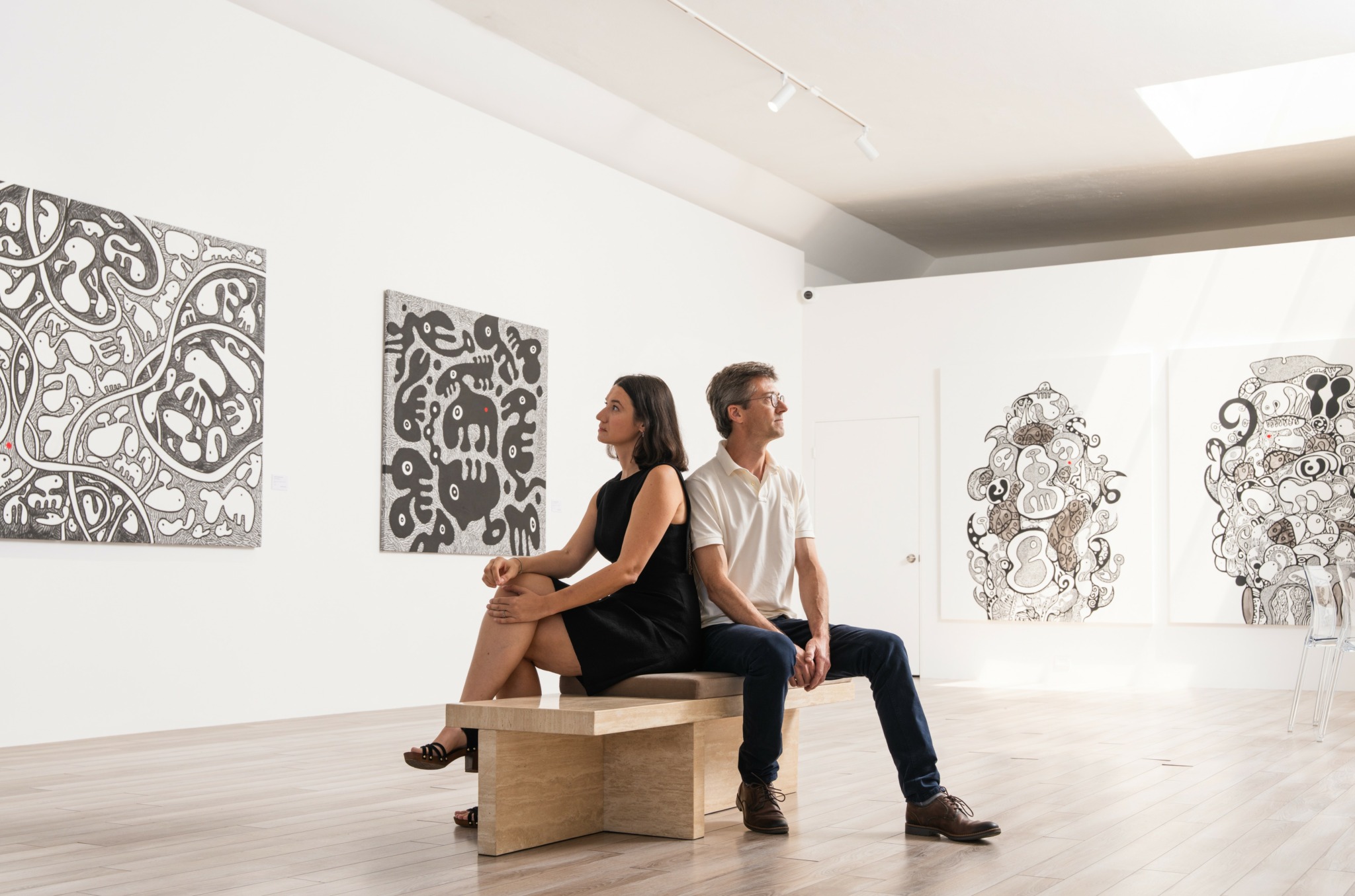We were lucky to catch up with Fanny Seimandi recently and have shared our conversation below.
Fanny , looking forward to hearing all of your stories today. Alright, so you had your idea and then what happened? Can you walk us through the story of how you went from just an idea to executing on the idea
My husband Julien and I are a French couple who spent ten years living in Martinique, in the French Caribbean. I was a judge, and he was an engineer, when we decided to open a contemporary art gallery in the United States, one that would showcase Caribbean artists whose work had deeply moved us. We knew the idea was strong: these artists had already earned recognition from museums and art institutions, yet no gallery had truly taken on the challenge of exhibiting their work abroad. Transporting large-scale pieces from small, often isolated islands is a real logistical feat, which means that few people outside the region had ever had the chance to see these works in person, let alone collect them.
Beyond the practical challenges, the first question was where to establish ourselves. The U.S. is vast, and we could have spent years exploring before choosing. We decided on the West Coast, since Caribbean art is already somewhat represented in Miami and, to a lesser extent, in New York — though not by the artists we champion. Even then, the possibilities still felt endless, and choosing Santa Barbara was ultimately a leap of faith. It made sense geographically, and we loved the city, but when you don’t have personal ties to a place, narrowing down your options can be both dizzying and daunting.
The next challenge was staying true to our artistic vision. Once people begin to understand your project (who you’re working with, and what your curatorial focus is) you start to face pressures, sometimes political, sometimes personal, to make certain choices. In those moments, it’s essential to stay grounded. A good idea can evolve, but only slightly; the core vision that first inspired you must remain intact. That’s where real success lies.
Awesome – so before we get into the rest of our questions, can you briefly introduce yourself to our readers.
Seimandi & Leprieur was born from a shared dream Julien and I carried for years: to create a space where the art we love could truly be seen and experienced. We’re a French couple who spent a decade in Martinique, where we discovered a remarkable generation of Caribbean artists — powerful, profound, and original. Their work was admired by curators and museums, yet almost invisible beyond the region. We wanted to change that.
Opening a gallery came naturally, but relocating it to the United States was a leap of faith. We had no family or network here, only a deep conviction that these artists deserved to be seen on an international stage, and that their voices would resonate far beyond their islands.
My own background might seem far removed from the art world: I served as a criminal judge in France for fifteen years. But art has always been part of my life, something inherited from my family and, eventually, embraced as a calling. I went back to university to earn a Master’s in Art Market Studies from the Sorbonne, and interned at the Palais de Tokyo in Paris, where I learned the inner workings of major contemporary art institutions.
Julien, an engineer and entrepreneur, brought his technical precision to exhibition design (mastering lighting, transport, and conservation) and developed a refined eye for space and composition.
We fell in love with the former Bluebird Café in Santa Barbara, a legendary 1970s music venue, and transformed it into a contemporary gallery while keeping its original spirit alive.
What makes Seimandi & Leprieur unique is our authenticity and our long-term commitment to the artists we represent. Our mission is to build bridges between regions, generations, and artistic worlds that rarely meet. We want every visitor to feel both challenged and welcomed, moved by the power of the works, and to leave with a renewed sense of wonder.
What’s a lesson you had to unlearn and what’s the backstory?
One of the biggest lessons we had to unlearn had nothing to do with art itself, but with how we relate to the public. Both Julien and I are naturally private people. Back in France, we weren’t on social media at all, and as a former magistrate, I was even discouraged from it. When we moved to the U.S. and opened the gallery, we quickly realized that visibility is part of the job. Journalists wanted to feature us personally, and people were curious about our story.
At first, it felt uncomfortable (like self-promotion) but we eventually understood that it’s really about connection. People want to know who’s behind a creative project, what drives it, and why it exists.
There’s also a cultural difference: in France, unconventional life choices are often questioned. In the U.S., they’re celebrated. That openness and positivity inspired us deeply. We learned that sharing our story isn’t vanity, it’s part of building trust and community.
What do you think helped you build your reputation within your market?
For us, it comes down to one thing: quality, in every possible sense. Not only the artistic quality of the works we show (which is always subjective), but the care we put into every detail of how they’re presented, handled, and shared. In this field, there’s no room for “almost.” Each exhibition must be thoughtfully designed, technically flawless, and visually striking, something that truly makes people stop and feel.
We spend a lot of time on things most people never notice: lighting, framing, packing, transportation, because we know how much those invisible choices shape the overall experience. We also personally deliver and install artworks for our collectors across Southern California, ensuring everything arrives in perfect condition and feels right in their space.
Even though we’ve only been open for a few months, that attention to detail has already become part of our identity. People sense the trust, care, and precision behind everything we do. And that, we believe, is how a real reputation is built: one perfect detail at a time.
Contact Info:
- Website: www.seimandileprieur.com
- Instagram: @seimandileprieur
- Facebook: www.facebook.com/seimandileprieur
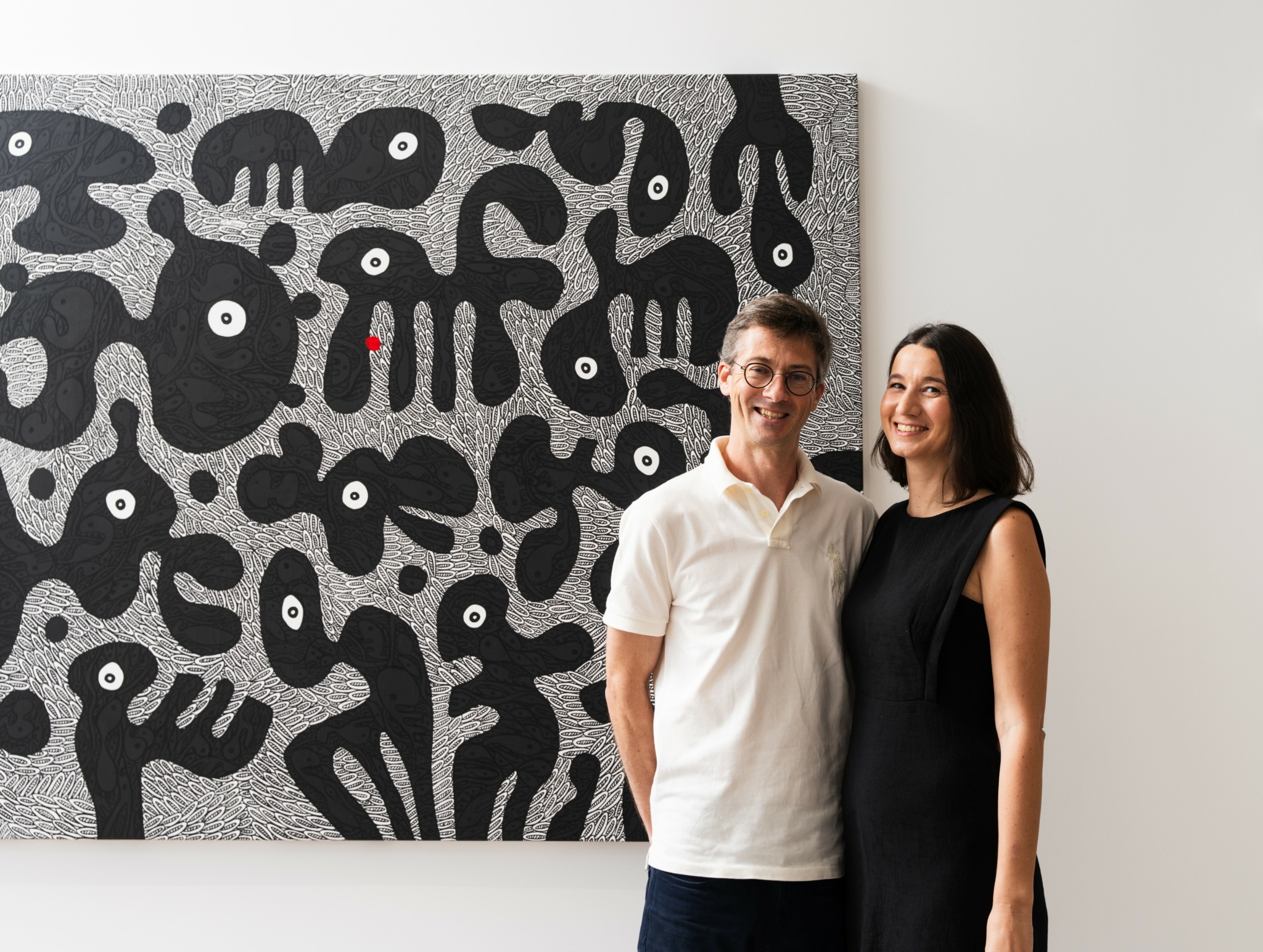
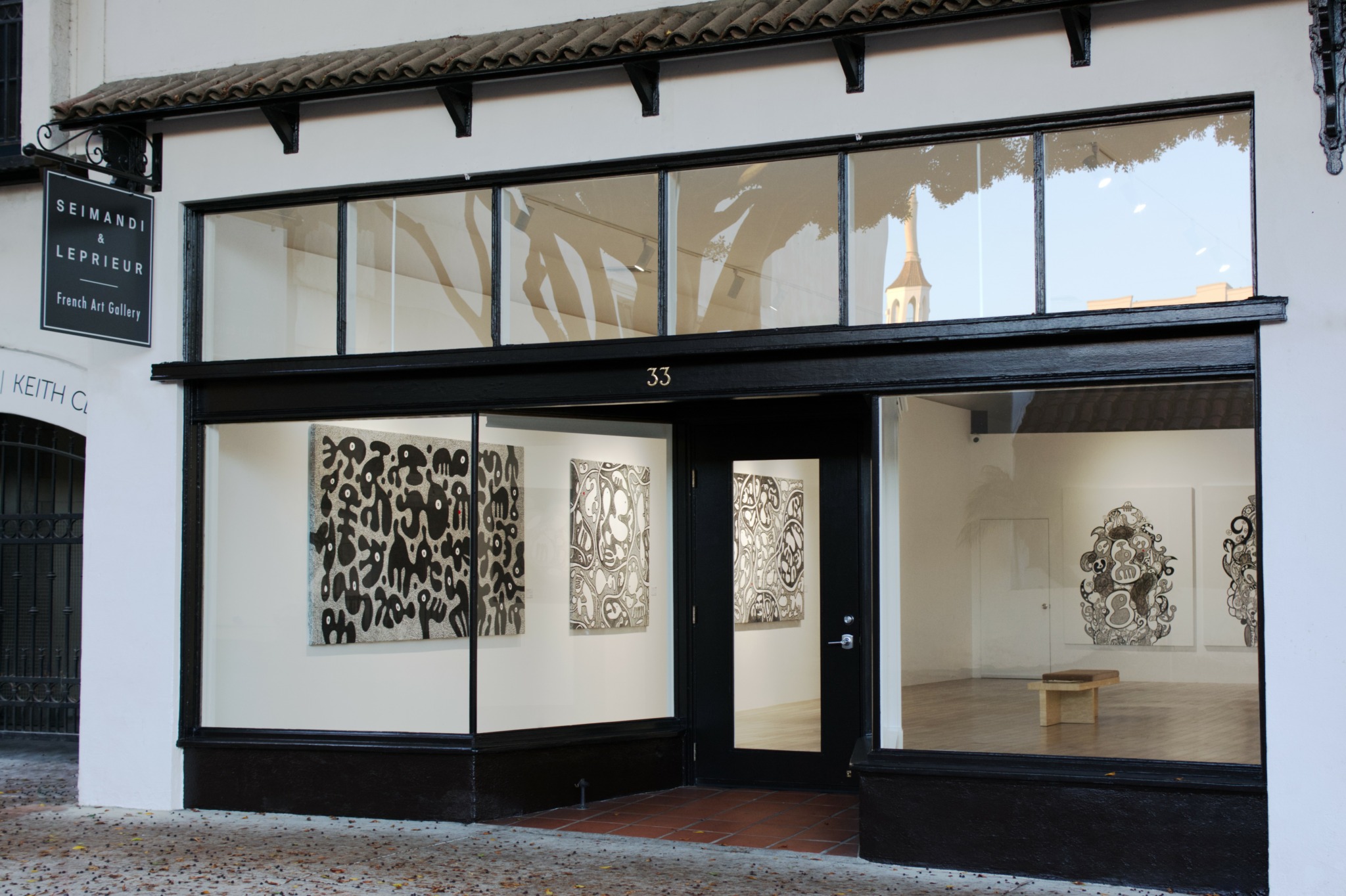
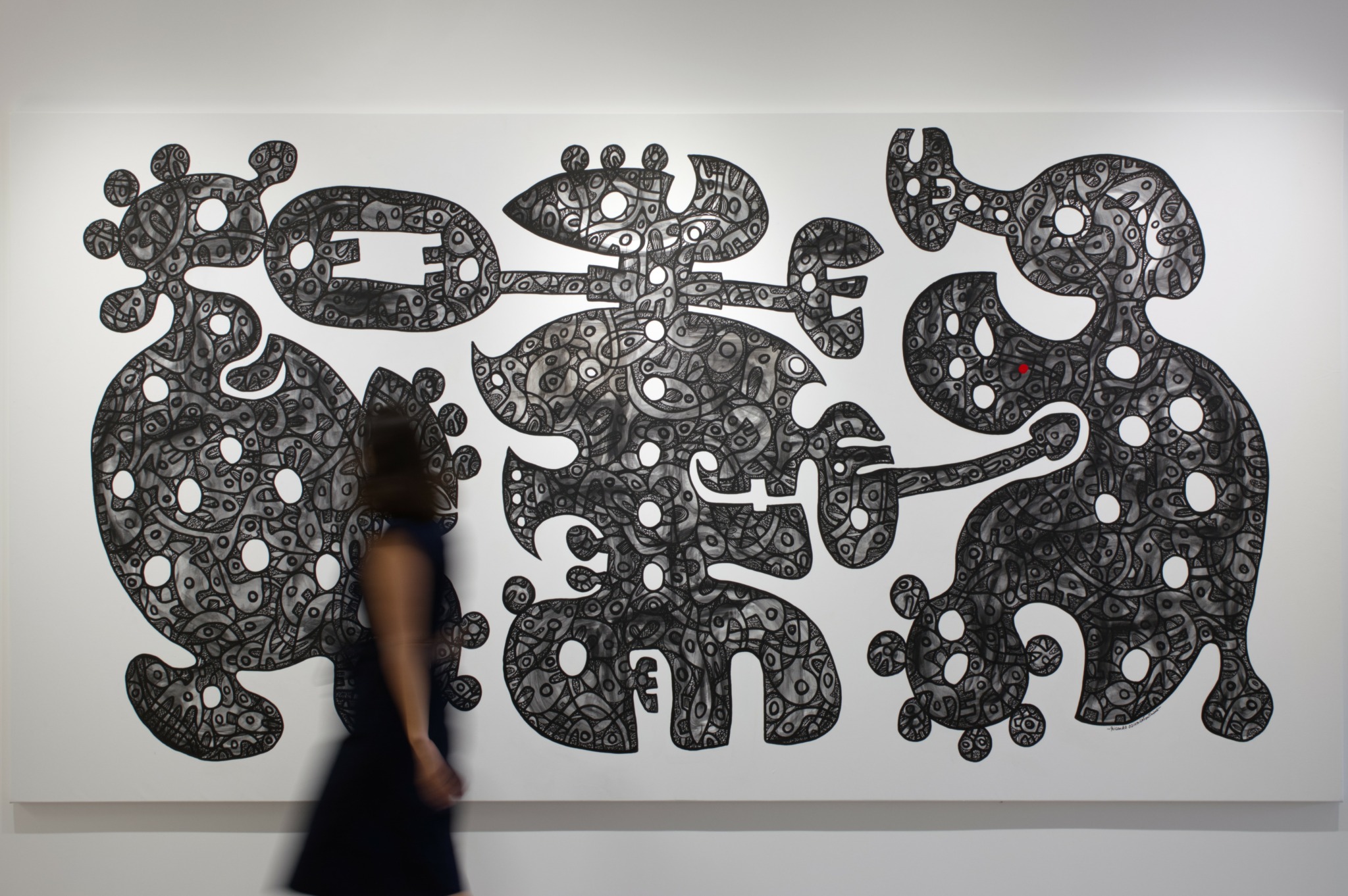




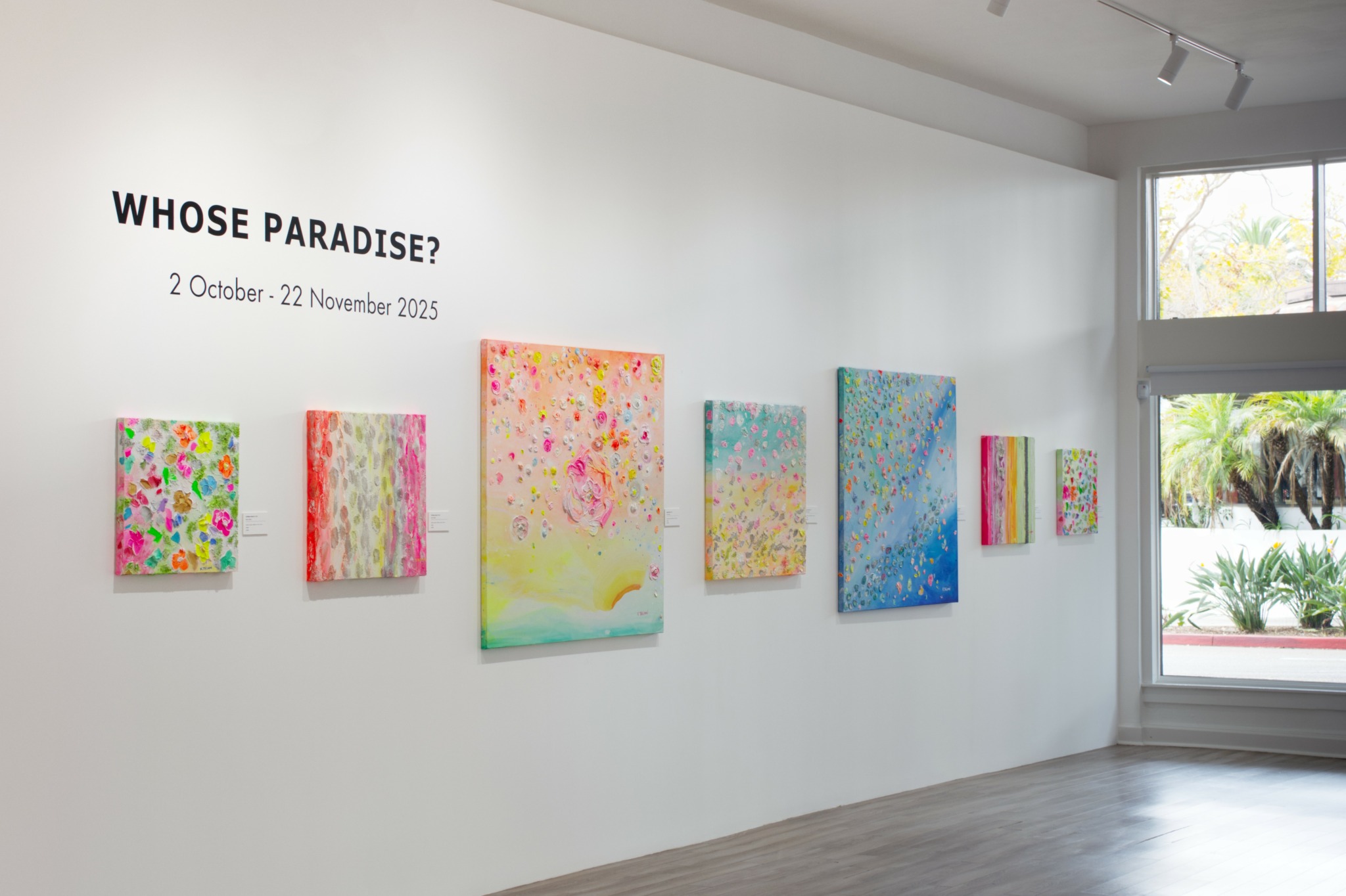
Image Credits
Only for the two portraits of Julien and me together (on the bench and beside the large canvas), please credit: Blake Bronstad and Santa Barbara Dining and Destinations.


